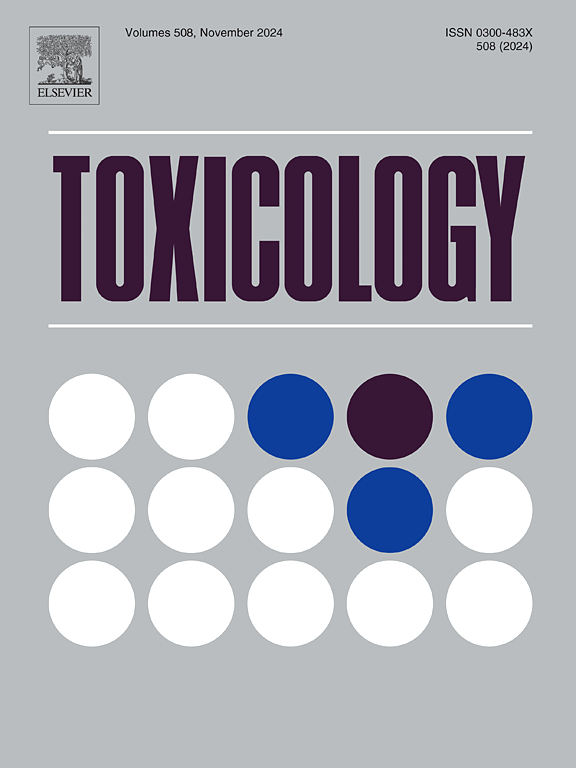TSLP和氧化应激的增加反映了香烟烟雾暴露后气道上皮损伤。碳半胱氨酸有什么作用吗?
IF 4.8
3区 医学
Q1 PHARMACOLOGY & PHARMACY
引用次数: 0
摘要
慢性阻塞性肺疾病(COPD)是一种慢性炎性退行性疾病。疾病恶化加速肺功能恶化。气道上皮在COPD病理生理中起核心作用。气道上皮释放包括胸腺基质淋巴生成素(TSLP)在内的警报器,以响应外源应激。细胞核中的Notch-1是TSLP基因表达的抑制因子。在此,我们研究了人类支气管上皮细胞中香烟烟雾提取物(CSE)对TSLP产生的影响,探讨了其与氧化应激事件和Notch-1信号通路的关系。在CSE暴露的16HBE中,评估了碳半胱氨酸对细胞内和细胞外氧化应激的影响;核Notch-1表达;TSLP基因表达。研究还探讨了非吸烟者、吸烟者和加重COPD患者(用碳半胱氨酸治疗前后)血清中TSLP水平的变化。CSE诱导16HBE TSLP基因表达和氧化应激,降低Notch-1核表达。电化学传感器的使用为评估氧化应激提供了可靠的工具。吸烟者血清中TSLP浓度高于非吸烟者,COPD加重。碳半胱氨酸能够抵消CSE对氧化应激和16HBE中TSLP基因表达的影响,并降低加重COPD中的TSLP。综上所述,烟雾暴露引起的气道上皮氧化应激增加导致体外TSLP生成和碳半胱氨酸增加,而体内则减轻诱导的TSLP生成。电化学传感器的氧化应激检测可以为评估上皮损伤和识别有资格使用靶向生物制剂的患者开辟新的途径。本文章由计算机程序翻译,如有差异,请以英文原文为准。
Increased TSLP and oxidative stress reflect airway epithelium injury upon cigarette smoke exposure. Is there a role for carbocysteine?
Chronic Obstructive Pulmonary Disease (COPD) is a chronic inflammatory degenerative disease. Disease exacerbations accelerate lung function deterioration. Airway epithelium has a central role in COPD pathophysiology. Airway epithelium releases alarmins including the thymic stromal lymphopoietin (TSLP) in response to exogenous stressors. Notch-1 in the nucleus acts as inhibitor of TSLP gene expression. Here, we investigated, in human bronchial epithelial cells, the effects of cigarette smoke extract (CSE) in TSLP production exploring the relationship with oxidative stress events and with Notch-1 signaling. In CSE exposed 16HBE, the effects of carbocysteine were assessed on: intracellular and extracellular oxidative stress; nuclear Notch-1 expression; TSLP gene expression. The TSLP levels in sera from non-smokers, smokers and exacerbated COPD patients (before and after therapy with carbocysteine) were also explored. CSE induced TSLP gene expression and oxidative stress and reduced nuclear expression of Notch-1 in 16HBE. The use of an electrochemical sensor allowed a reliable tool to assess oxidative stress. TSLP concentrations were higher in sera from smokers and exacerbated COPD than in sera from non-smokers. Carbocysteine was able to counteract the effects of CSE in oxidative stress and in TSLP gene expression in 16HBE and to reduce TSLP in exacerbated COPD. In conclusion, increased oxidative stress induced by smoke exposure in airway epithelium leads to increased TSLP production and carbocysteine in vitro and in vivo mitigates the induced TSLP production. Oxidative stress detection by electrochemical sensors can open new avenues for evaluating epithelial damage and for identifying patients eligible to alarmin targeted biologics.
求助全文
通过发布文献求助,成功后即可免费获取论文全文。
去求助
来源期刊

Toxicology
医学-毒理学
CiteScore
7.80
自引率
4.40%
发文量
222
审稿时长
23 days
期刊介绍:
Toxicology is an international, peer-reviewed journal that publishes only the highest quality original scientific research and critical reviews describing hypothesis-based investigations into mechanisms of toxicity associated with exposures to xenobiotic chemicals, particularly as it relates to human health. In this respect "mechanisms" is defined on both the macro (e.g. physiological, biological, kinetic, species, sex, etc.) and molecular (genomic, transcriptomic, metabolic, etc.) scale. Emphasis is placed on findings that identify novel hazards and that can be extrapolated to exposures and mechanisms that are relevant to estimating human risk. Toxicology also publishes brief communications, personal commentaries and opinion articles, as well as concise expert reviews on contemporary topics. All research and review articles published in Toxicology are subject to rigorous peer review. Authors are asked to contact the Editor-in-Chief prior to submitting review articles or commentaries for consideration for publication in Toxicology.
 求助内容:
求助内容: 应助结果提醒方式:
应助结果提醒方式:


